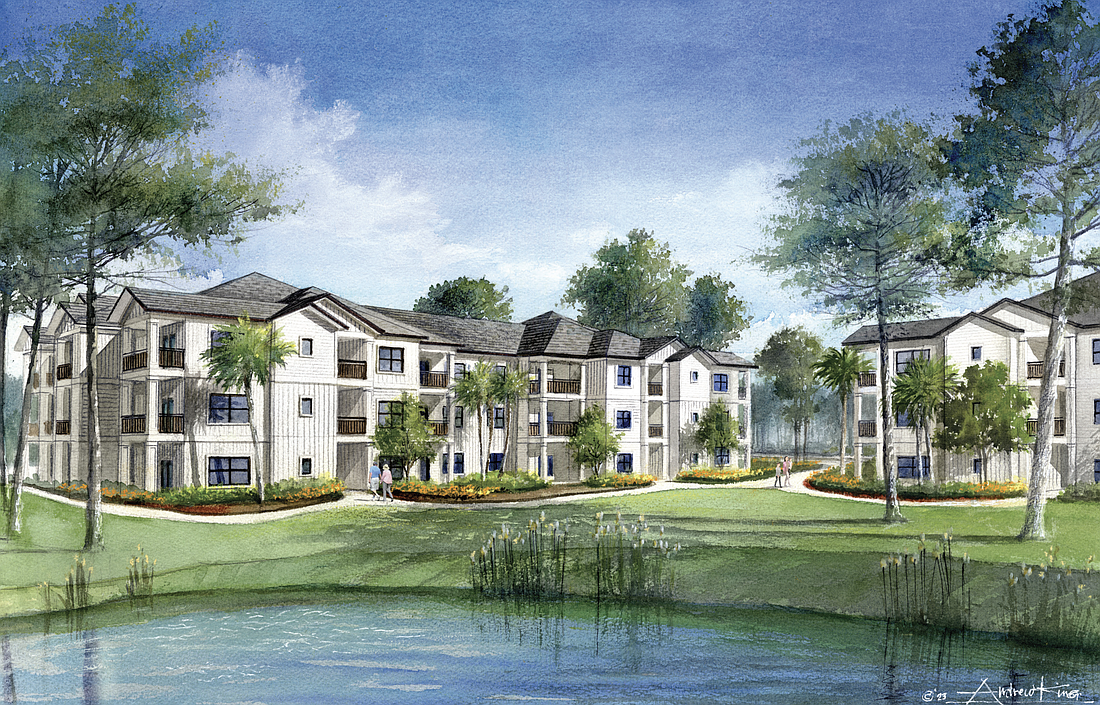- January 15, 2025
-
-
Loading

Loading

When it comes to the Tymber Creek Apartments development proposal, Ormond Beach City Commissioners face two options: approve as presented, or risk the possibility of a higher density development.
Though the public hearing for the development’s rezoning and development order requests was held on Tuesday, April 18, the commission decided to table the items until its May 16 meeting due to the impact of a new law that would allow developers to circumvent local land use and zoning regulations if their developments set aside at least 40% of units for affordable housing.
The Live Local Act, previously known as Florida Senate Bill 102, was signed by the governor on March 29 and will go into effect on July 1. It affects properties currently zoned commercial, industrial or those with a mixed use zoning, and would allow developers to build multifamily or mixed-use residential buildings at the highest allowed density.
The law sets a “bad precedent” from the home rule standpoint, said attorney Mark Watts, who represented the developer at the hearing. But, it is coming, and based on the site, the developer — VCP Ormond Beach II, LLC — could build up to 525 units on the 19-acre property once the law goes into effect. At this time, the developer is asking the city for 270 units, reduced from 300, and is proposing larger buffers and setbacks to lessen impacts on the nearby neighborhoods of Moss Point and Indian Springs.
“The thing that we’re balancing is what type of multifamily will be here, because it’s not a question of if it will be here,” Watts said. “It’s what type, and how much do we want to control that process. The most control you will have is ... in this process.”
The current proposal for the property, located at 36 N. Tymber Creek Road, would not include affordable or workforce housing.
There is, however, another proposal the commission could consider where the developer would build a 164-unit apartment development. All of it would be affordable housing, but would not have the proposed buffers or setbacks sought by the nearby neighborhoods.
Of the 11 residents that spoke during the meeting, only two begrudgingly spoke in favor of the commission approving the project, both residents of the Indian Springs neighborhood, which negotiated with the developer to remove one of the buildings in the proposed plan and shifting buildings away from the subdivision.
Indian Springs HOA President Troy Railsback said their reason to support the project is that the neighborhood doesn’t want a commercial or higher density development on the property.
“That was the reason we adamantly worked with the developer and their team to try and find something that would be amicable to us,” Railsback said.
Residents’ concerns included worsening the current traffic issue out west of I-95, the increase in density, school currency issues, and that the apartments were not compatible with the surrounding single-family neighborhoods.
When reacting to the Live Local Act, several residents asked the commission to take some time to investigate its impacts before making a decision on the apartments.
“I think it may be worth taking a breath and looking into the matter a little bit more closely,” resident Donna Owens said.
The Tymber Creek Apartments proposal was already arriving to the City Commission with a 5-0 recommendation by the Ormond Beach Planning Board to be denied.
Nobody is excited about the development, City Commissioner Susan Persis said, pointing out that the residents who spoke in favor did so because they thought it was the “lesser evil.”
“Ormond Beach is special,” she said. “We have beautiful places. We shouldn’t be looking at something that just has a less negative impact.”
Mayor Bill Partington said that, if the commission denies the development, under the Live Local Act, the developer could come back to the city in July with an application for 525 units, or however many the site could actually accommodate, and the commission wouldn’t get a chance to review it.
The easy action would be to deny the development, Partington said.
“But I’m not interested in necessarily doing the easy thing,” he said. “I want to do what’s correct and best for all our residents in the long term.”
The city is pursuing a $1.26 million seawall replacement for Andy Romano Beachfront Park.
The park’s seawall experienced a partial failure in its north corner as a result of Hurricane Nicole, according to a city staff memo, and a structural engineer determined it to not be repairable, as the existing seawall, constructed in the 1950s, doesn’t meet current code requirements.
The city is looking at replacing the seawall with a cantilever wall system, which the city memo explains is held in place “by deeply embedding precast concrete wall planks into the sand.” This would allow construction to take place from the beach, minimizing the impact on the park. It will also replace the wood ramp at the park with a concrete version.
“We’ve replaced that ramp ... three times since it was originally constructed,” Public Works Director Shawn Finley said.
The city aims to put the project out for bid in May, with the hope to begin construction after sea turtle season in November. The project is estimated to be completed in April 2024.